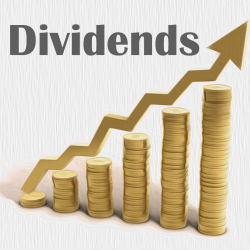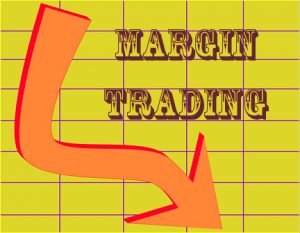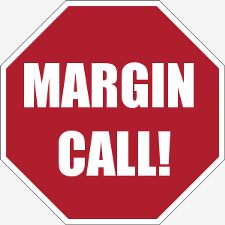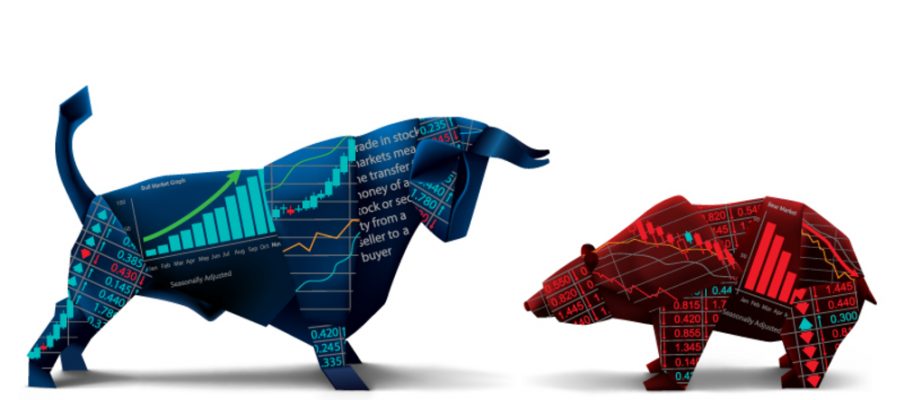Why Have a Plan?
Why outline a plan? Because your plan will help determine your trading style, strategy and philosophy; i.e., the more ambitious the plan, the more aggressive the trading style should be. In this case aggressive trading does not mean a greater number of trades, but generally implies more risk, usually in the form of larger commitment of capital invested in a higher number of stocks; in which case you may need to start with four or five thousand dollars rather than $2,500.
By writing down in outline form what you want to achieve and in what time frame, along with your long and short-term objectives and goals, you will be able to see and refer back to what it was you wanted to accomplish in the first place. Trading the stock market is fifty percent planning, twenty five percent execution, and one hundred percent psychology. You need to determine what you think you will get from buying and selling stock in terms of satisfaction, prestige and compensation, then put it down on paper. If you go into the market not sure of what you want out of it, you will almost certainly not put into it, what you need to get what you want out of it.
Your plan should cover your style (Trend follower, fundamentalist, Chartist, Cramer-ite or combination) and the philosophy or technique you will use (Swing-trader, mid-term trader), along with detailed risk management techniques as well as entry and exit criteria and whatever trading rules you adopt from your software choice. (i.e., using on-line modified strategies, I will swing-trade low dollar stocks using Jim Cramer’s criteria on the major markets and…) Post your plan in plain view at your trade station; read it every time you start trading or when doing research. As you grow into your trading style you can modify or change the plan to fit what you are doing as long as what you are doing is showing a profit. If you do not show a profit within the first few months you need to stop, review, redo your plan, and start again.
LRT has a trading plan outline and full trading plan available for sale at the LRT store.

Decide on a style
Your MO
A trading style is simply determining what type of trading to favor:
• Day traders – are out of the market at the end of each trading day
• Short-term traders – hold positions open for two to five days but not over a weekend • Swing traders – hold positions open for a few days to a few weeks
• Mid term traders – hold positions open for up to six months
Day Trading requires more money to open an account, $25,000 or more, and we do not recommend day trading for beginners. All other traders should let profits determine the length of time to keep a position open. Some first time traders set a 25 to 35 percent profit goal to close the trade. Others simply adjust stops to prevent giving back more than 5 percent of the unrealized profits. Still others just let it ride as long as each week shows a profit. We think first time traders should have well-defined entry and exit points. Focus on how you will determine your trading style and profit taking strategy.
Favoring a particular trading style does not prevent you from changing to another style of trading from time to time. At some point you may find that you are doing all four styles of trading; in all likelihood you will probably not stick to just one style of trading. Successful trading is about going where the profits are. We recommend starting as a short term or swing trader because it gives you time to develop your trading skills and learn risk and money management techniques based on your skill and account size. As you start to make money and your account grows you can take on a little more risk. Whatever style you decide on, remember, it‟s not about how quick you can make big profits, but how often you make a profit. Be realistic. Set your profit targets at obtainable levels and concentrate on risk control and money management. This is trading, not investing. Let your profits run and cut your losses quickly.
Trading Rules -Knowing what you want – and what it takes to get it
Whether you are a working person getting up each day taking care of a family or going out and earning a pay check; you have developed a credible work ethic on your own; regardless of what type of work you do or at what level you are. If you keep a household together or a business together you have demonstrated the ability and self-control to do whatever you set your mind to. Most of us have jobs we more or less like or can tolerate until we find something else that is better, either within the company we are currently working for or by moving on to another company. We do this because we have to; we have made commitments to ourselves, our families and to a lifestyle. Sometimes we‟re not sure what we really want to do, so we go on doing what it is we do because we haven’t set any personal goals for ourselves. Change is easiest when done in little steps, the first step is deciding to change, and the next step is to focus in on the closest point of the change you want to make. Learning to trade stock and profit from it, will change your life, not because of the money you can make and the freedom it can give you; but because of the self-confidence and sense of control over your own fate that comes with being able to do it.
Taking the first step toward becoming a trader requires learning another way to make money, one that can lead to an alternative way to live your life. One of your first goals would be to learn the basic methodology of trading: Protect Your Capital. Using risk and money management to control your losses, along with developing a reliable profit making strategy, and understanding the cycles and trends of the overall stock market as well as the different sectors and business groups will put you on the path to successful financial change. Your first objective may be to find a source of information and data that provides you with what you need to accomplish your goal. A second goal could be to develop a consistent system of picking stocks that eliminates subjectivity and delivers a high percentage of profitable trades. Your next objective in support of your second goal may be to identify straightforward entry points which allow you to make quick, confident buy decisions that constitute a totally objective method of entering trades.
A third goal along these same lines might be to formulate a profit ladder that provides predetermined exit points that allow you to maximize profits and protect against large losses should the market move in the wrong direction. The underlying objective here would be to establish predetermined profit percentages to place stop orders and trailing stops to meet your goal. The above goals and objectives cover the basic principles and techniques of profiteering and give a broad look at the methods and techniques to be disclosed in later chapters.
In every endeavor there are always rules. Trading rules are merely discipline in print; they are what we call self-governing-success. A set of simple and practical trading rules can make your trading experience a lot less costly. You should establish a set of rules that matches your trading style. Here are some rules for first time traders to consider:
• Don’t Over-trade
• Never put more than 2% of your total capital into one position
• Only buy a stock that meets all of your qualifying criteria
• Never use Market Orders
• Trade With the Trend
• Always check for recent insider trading on stocks you are about to buy
• Take Windfall Profits when you get them
• Always use stop orders and/or trailing stops
• Know the type of trade you are in (Short term, Swing, etc. etc.)
• Never give back more than 15% of your profits
• Never let a profit turn into a loss
Rules are refined, developed, and done away with as a trader’s goals, objectives, discipline and money management techniques develop. Each trader must continually be aware of the risk of trading and abide by their rules religiously; write them down and hang them on your trade station so you can see them every time you trade. Each of your strategies should have its own set of rules that support you goals and objectives.
If you have a strategy with an objective that is based on a percent gain/loss (exit after 100% profit or 10% loss) and you have a rule that says never give back more than 15 percent of your earned profit, and your position starts to decline after making 70% you should know at exactly what dollar value you will be exiting this trade and adjust your downside stop to protect your profit.
Rules should be developed in support of a strategy. Knowing the mathematical expectation, expected return and Profit to Loss Ratio of all of your real-time strategies is a key part to developing rules that you can live with. Too many rules clutter the trading process, too few rules increase risk.
Record Keeping
In the trading business it is hard to find the right combination of strategy, timing and execution that gives you the results you want. When it happens you need to be able to repeat what you did as soon as you can. If you keep a checklist of your trades it will make it very easy to repeat a winning process. We have found that keeping track of the strategy source, the strategy criteria, number of stocks found, sectors and industries are things that should always be recorded. Also, your checklist should include all of the qualifying requirements and conditions for the stock selection process.
Online brokers provide all the transaction records and tax data for you. However, we have found that stock splits, symbol changes and prior year cost basis may not always be easy to recover from your on-line account, so we recommend you make it a habit to print change data as it happens and keep a hard copy on file as a back-up.
Research notes that lead to a winning strategy or any one of a dozen other factors that contribute to the development of a particular stock strategy that turns out to be a big winner, can be used again and again if kept until conditions change on the position or the portfolio or stocks that the research or strategy produced. Once you are an established trader and have committed to memory all of your winning strategies and techniques, you may not want to save all your notes, but we can‟t tell you the number of times we wished we had saved our research notes and checklist to reconfirm a winning concept and strategy.
Record keeping isn’t going to change what happens to the initial trading process, but you’ll be surprised how it can change subsequent trading for the better and how much time it will save in the long run.
If you are ready to begin trading, go to “Getting Started“.














 In very general terms a margin is a border, an edge of something. However, in the financial world, the word margin has a slightly different meaning. Namely, the margin, in this case, is related to the collateral we have mentioned previously. The margin is used to cover the credit risk the margin trader poses for the lender. Essentially, it is the sum of money that you would have to ensure from your funds. The margin can vary greatly, which usually depends on the resource in question. For an example, a margin for currency futures is usually quite low. In fact, it would rarely get over 6 percent of the total value of the contract. However, if stocks were in question they would require quite a bit more. To be a bit more precise, you would usually have to cover at least 30 percent of the value and up to one half of it. One should bear in mind that the margin requirement will always follow the stock and how volatile it is. The more volatile the stock in question is, the higher the requirement will be.
In very general terms a margin is a border, an edge of something. However, in the financial world, the word margin has a slightly different meaning. Namely, the margin, in this case, is related to the collateral we have mentioned previously. The margin is used to cover the credit risk the margin trader poses for the lender. Essentially, it is the sum of money that you would have to ensure from your funds. The margin can vary greatly, which usually depends on the resource in question. For an example, a margin for currency futures is usually quite low. In fact, it would rarely get over 6 percent of the total value of the contract. However, if stocks were in question they would require quite a bit more. To be a bit more precise, you would usually have to cover at least 30 percent of the value and up to one half of it. One should bear in mind that the margin requirement will always follow the stock and how volatile it is. The more volatile the stock in question is, the higher the requirement will be.










 Currently, the stock company has about 3200 trading companies and its trading shares takes place in different kinds of companies including:
Currently, the stock company has about 3200 trading companies and its trading shares takes place in different kinds of companies including: